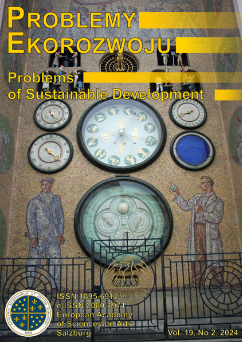Low Carbon Growth: An Indian Perspective on Sustainability and Technology Transfer
Purnamita Dasgupta
Environmental and Resource Economics Unit, Institute of Economic Growth University of Delhi Enclave (North Campus), Delhi 110007 (India)
Nisha Taneja
Indian Council for Research on International Economic Relations, Core 6A, 4th Floor, India Habitat Centre, New Delhi 110003 (India)
Abstract
This paper provides an Indian perspective on the issue of technology transfer, in the specific context of tackling climate change. The paper examines how technology transfer issues have panned out when developing countries have had to meet standards laid down in international agreements. In addressing climate change, the efficacy of the CDM as an instrument to facilitate technology transfer is analysed. The socio-political and economic analysis of implementing the clean development mechanism provides useful insights. An indicative exercise on India’s export vulnerability in the face of alternative regulatory regimes such as imposition of carbon tariffs demonstrates the importance of technology transfer mechanisms between the developed and developing countries. The attainment of sustainable development through forward looking mechanisms of technology transfer will improve India’s contribution to a global solution for climate change.
Keywords:
climate change, sustainable development, technology transfer, clean development mechanism, trade agreementsReferences
AMRICAN Clean Energy and Security Act 2009 (Waxman-Markey Bill 2009), http://www.opencongress.org/bill/111-h2454/show.
Google Scholar
DASGUPTA, P., Economics and Climate Change: Some Relevant Aspects for Human Security in India, in: Security Challenges and Implications of Climate Change for India, IDSA, Academic Foundation, Delhi 2009.
Google Scholar
DASGUPTA, P., TANEJA, N., 2010, Trade, Technology Transfer and Climate Change, in: Economic and Political Weekly, Volume XLV No. 3, January p. 16-22.
Google Scholar
ELLIS, J., MORAIF, S., KIM J.A., Reporting And Recording Post-2012 GHG Mitigation Commitments, Actions and Support, No.COM/ ENV/EPOC/IEA/SLT(2009)4, OECD 2009.
Google Scholar
GERMAIN, M.., MAGNUS, A., VAN STEENBERGHE, V., 2007, How to design and use the clean development mechanism under the Kyoto Protocol? A developing country perspective, in: Environmental and Resource Economics, Vol. 38, Number 1, September.
Google Scholar
GOVERNMENT of India Submission to UNFCCC on Technology Transfer Mechanism, http://unfccc.int/files/kyoto_protocol/application/pdf/indiatechtransfer171008.pdf.
Google Scholar
LETTER TO UNFCCC regarding listing in the Chapeau to the Copenhagen Accord, March 8, 2010, Government of India, http://unfccc.int/files/meetings/application/pdf/indiacphaccord.pdf.
Google Scholar
MoEF, India’s GHG Emissions Profile - Results of five climate modeling studies, Ministry of Environment and Forests, Government of India, September 2009, http://www.moef.nic.in.
Google Scholar
MoEF, India’s Submission to the UNFCCC, Ministry of Environment and Forests, Government of India, August 2009, http://www.moef.nic.in/downloads/home/UNFCCC-final.pdf.
Google Scholar
NARAIN, U., VAN’T VELD, K., 2008, The Clean Development Mechanism’s Low-hanging Fruit Problem: When Might it Arise, and How Might it be Solved?, in: Environmental and Resource Economics, Vol. 40, Number 3, July.
Google Scholar
RAMESH S.J., Remarks of the Minister of State (Independent Charge) Environment and Forests, Government of India at the 6th MEF meeting, Washington D. C., April 18th, 2010. Communication from MoEF, GOI.
Google Scholar
REPORT, Report of the Conference of the Parties on its fifteenth session, held in Copenhagen from 7 to 19 December 2009, Addendum, Part Two: Action taken by the Conference of the Parties at its fifteenth session, Advance version, 30 march 2010. http://unfccc.int/resource/docs/2009/cop15/eng/11a01.pdf.
Google Scholar
SAQIB, M., SEHGAL, R., PAMLIN. D., Indian Companies in the 21st Century, WWF, Delhi 2009.
Google Scholar
SERES, S., Analysis of Technology Transfer in CDM projects, UNFCCC 2008.
Google Scholar
SUBRAMANIAN, A., BIRDSALL, N., MATTOO, A., 2009, India and Climate Change: Some International Dimensions, in: Economic and Political Weekly, Vol. 44 No. 31 August.
Google Scholar
THE Copenhagen Accord, http://unfccc.int/home/items/5262.php.
Google Scholar
UNFCCC, Clean Development Mechanism: 2008 In brief, United Nations Framework Convention on Climate Change, 2008, http://unfccc.int/resource/docs/publications/08_cdm_in_brief.pdf.
Google Scholar
UNFCCC The Marrakesh Accords and the Marrakesh Decleration, http://unfccc.int/cop7/documents/accords_draft.pdf.
Google Scholar
UNFCCC, United Nations Framework Convention on Climate Change, http://cdm.unfccc. int/Statistics/index.html.
Google Scholar
WORLD BANK, Clean Development Mechanism projects in India, The World Bank, http://search.worldbank.org/projects?qterm=clean+development+mechanism&_ctry_exact=Republic+of+India
Google Scholar
WTO-UNEP, Trade and Climate Change, World Trade Organisation and United Nations Environment Programme, Geneva 2009.
Google Scholar
Authors
Purnamita DasguptaEnvironmental and Resource Economics Unit, Institute of Economic Growth University of Delhi Enclave (North Campus), Delhi 110007 India
Authors
Nisha TanejaIndian Council for Research on International Economic Relations, Core 6A, 4th Floor, India Habitat Centre, New Delhi 110003 India
Statistics
Abstract views: 38PDF downloads: 18
License

This work is licensed under a Creative Commons Attribution-ShareAlike 4.0 International License.




